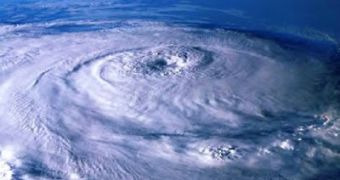The journal Proceedings of the National Academy of Sciences has recently witnessed the publication of a new study stating that a warmer global climate is bound to up both the frequency and the intensity of tropical storms.
Researchers are first and foremost concerned about tropical cyclones, seeing how the extreme weather manifestations they bring forth are known to cause serious damages and even human losses.
In order to link the formation of tropical cyclones to the emergence of a global warmer climate, the specialists who have investigated this issue have analyzed information dating from the year 1923 up until present days provided by the monitoring stations up and running along the Eastern Seaboard of the US.
Thus, they had access to information concerning both daily tide levels and average temperatures worldwide, and have found that warmer years were typically associated with extreme weather manifestations such as cyclones and storm surges.
E! Science quotes researcher Aslak Grinsted, who explained how, “We simply counted how many extreme cyclones with storm surges there were in warm years compared to cold years and we could see that there was a tendency for more cyclones in warmer years.”
He further elaborated on this issue as follows: “We have calculated that extreme hurricane surges like Katrina are twice as likely in warm years than in cold years. So when the global climate becomes 3 degrees warmer in the future, as predictions show, what happens then?”
Up until now, there were some who argued that the frequency of extreme weather manifestations had pretty much remained the same over the years, and that the only thing that had changed was the media attention these natural phenomena received.
In other words, the problem is not that storm surges occur more often; the problem is that people speak about them more than they did in the past.
However, the findings of this new study are bound to alter the aforementioned opinion to a certain extent.

 14 DAY TRIAL //
14 DAY TRIAL //